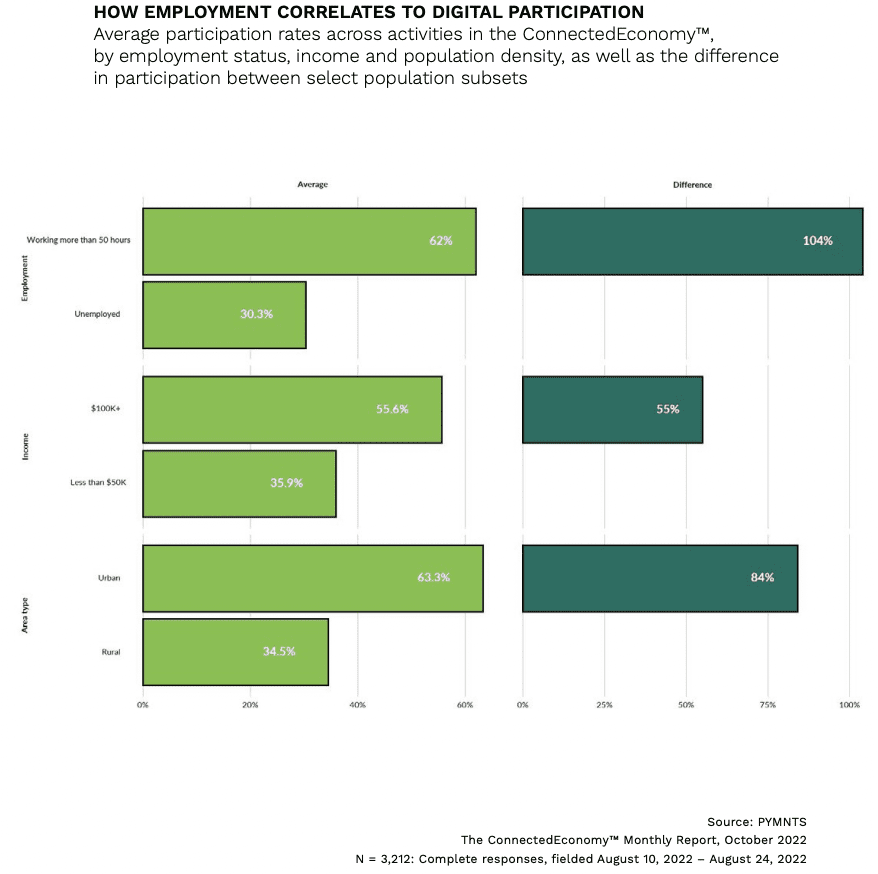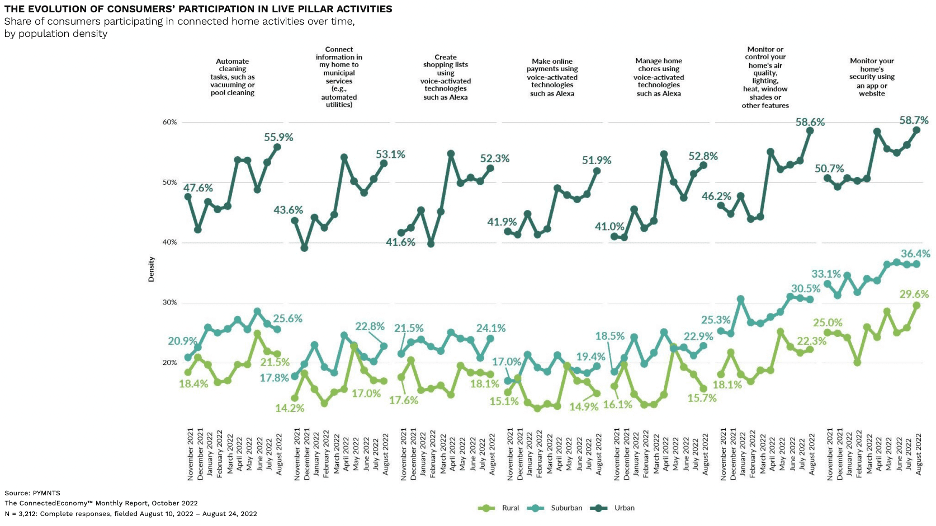Keeping up With the Connected Joneses

Another day. Another dollar. Another item in your Amazon cart to avoid a trek to your local big box store. Another voice command to “Dim the lights” or “play ‘Bling Empire’ on Netflix” when the day is done.
Welcome to everyday life in America, circa 2022 where the level of connectedness and digital shortcuts is unprecedented and playing an increasingly large role in on-the-move consumers’ lives.
If it seems like your personal work-web balance is skewed toward the latter and that you’re spending more of your waking hours between work and the internet, you aren’t alone.
New data from PYMNTS finds that digital engagement has been surging along with the employment boom. In fact, the two seem to be directly related. In October’s “ConnectedEconomy™ Monthly Report: The Employment Effect,” we found that employed consumers were 80% more likely to engage in digital activity than unemployed ones. And the more we work, the more we go online.
“It’s a given that having more consumers with paying jobs makes the economy stronger,” we note in the study. “Now, PYMNTS has uncovered evidence that employment may also be key to driving the economy’s digital transformation.”

In fact, the study notes, people who worked more than 50 hours a week had an average engagement rate of 66%. Those who worked less than 20 hours a week had a participation rate of 50%, while the rate for unemployed respondents slumps to 30%.
To be sure, this shift is not all shopping and streaming. Our ConnectedEconomy surveys have been tracking household activity in seven key areas (as charted below) since November of 2021, and all of them have seen a significant uptick in activity since then.
From making shopping lists to deploying automated cleaning tasks to paying bills or controlling home security, we are increasingly deploying digital tools to manage more and more of our household chores.

“Automated environmental controls and security systems were the two most used connected home technologies among urban consumers and their suburban and rural counterparts,” the study notes.
Rising energy costs also appeared to be a factor, the report showed, as the desired to optimize heating and cooling played a big role in adoption as well, especially south of the Mason-Dixon Line, where record high temperatures had consumers sweating over their power bills over the summer.
Taken together, the urban, affluent, hard-working individual or household is the current connectivity benchmark, where all seven categories saw uptake of at least 52%, and up to 58% when it comes to control climate, lighting and security systems.
So that’s what the Joneses are up to. How does your digital efficiency stack up?
